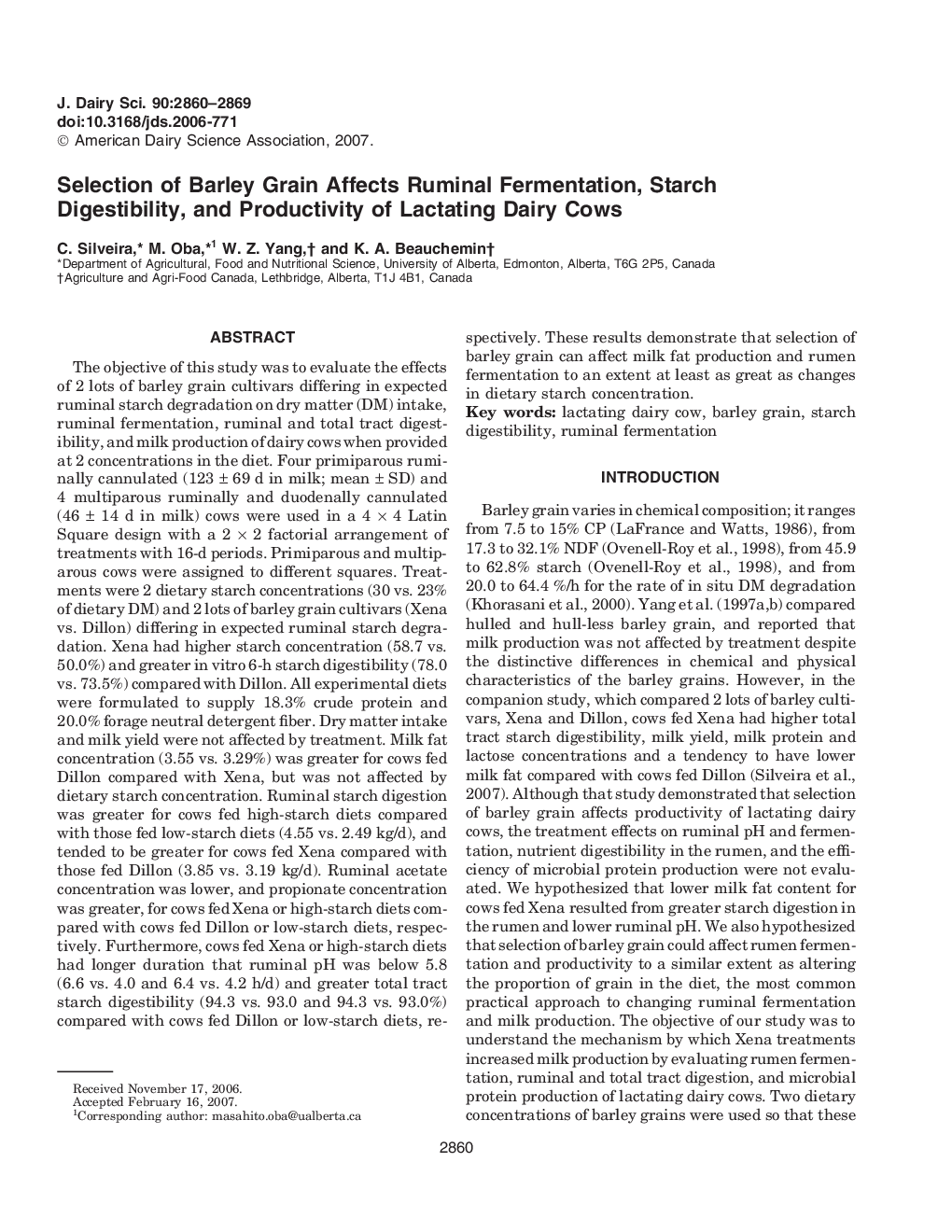| Article ID | Journal | Published Year | Pages | File Type |
|---|---|---|---|---|
| 2440912 | Journal of Dairy Science | 2007 | 10 Pages |
The objective of this study was to evaluate the effects of 2 lots of barley grain cultivars differing in expected ruminal starch degradation on dry matter (DM) intake, ruminal fermentation, ruminal and total tract digestibility, and milk production of dairy cows when provided at 2 concentrations in the diet. Four primiparous ruminally cannulated (123 ± 69 d in milk; mean ± SD) and 4 multiparous ruminally and duodenally cannulated (46 ± 14 d in milk) cows were used in a 4 × 4 Latin Square design with a 2 × 2 factorial arrangement of treatments with 16-d periods. Primiparous and multiparous cows were assigned to different squares. Treatments were 2 dietary starch concentrations (30 vs. 23% of dietary DM) and 2 lots of barley grain cultivars (Xena vs. Dillon) differing in expected ruminal starch degradation. Xena had higher starch concentration (58.7 vs. 50.0%) and greater in vitro 6-h starch digestibility (78.0 vs. 73.5%) compared with Dillon. All experimental diets were formulated to supply 18.3% crude protein and 20.0% forage neutral detergent fiber. Dry matter intake and milk yield were not affected by treatment. Milk fat concentration (3.55 vs. 3.29%) was greater for cows fed Dillon compared with Xena, but was not affected by dietary starch concentration. Ruminal starch digestion was greater for cows fed high-starch diets compared with those fed low-starch diets (4.55 vs. 2.49 kg/d), and tended to be greater for cows fed Xena compared with those fed Dillon (3.85 vs. 3.19 kg/d). Ruminal acetate concentration was lower, and propionate concentration was greater, for cows fed Xena or high-starch diets compared with cows fed Dillon or low-starch diets, respectively. Furthermore, cows fed Xena or high-starch diets had longer duration that ruminal pH was below 5.8 (6.6 vs. 4.0 and 6.4 vs. 4.2 h/d) and greater total tract starch digestibility (94.3 vs. 93.0 and 94.3 vs. 93.0%) compared with cows fed Dillon or low-starch diets, respectively. These results demonstrate that selection of barley grain can affect milk fat production and rumen fermentation to an extent at least as great as changes in dietary starch concentration.
